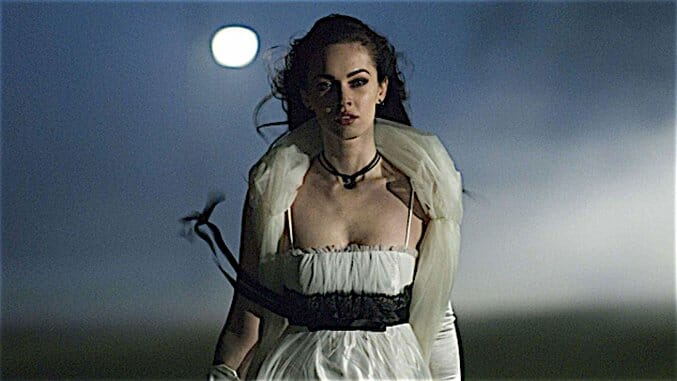
When you think of movie monsters, I’d bet half my trashy VHS collection that you think of a Universal Horror creature, like a werewolf, Frankenstein’s monster and Dracula. Or, maybe the Mummy, Dr Jekyll or a rampaging ape. These classic movie monsters are obviously male. The same thing goes for more recent horror villains: Freddy, Jason and Michael are monstrous men who don’t even need last names to bring to mind the slice and dice approach to life. But there are plenty of female monsters. Often, they follow the type of the dangerous seductress, a femme fatale whose captivating beauty masks their wicked intent. This character features in many genres, but in horror she is especially frightening—she might physically transform into a monstrous creature.
Like most horror films, the female monster reflects social anxieties. This can replicate and reiterate problematic—often misogynistic—attitudes about gender and sexuality. Read: women are not what they seem, women need to be controlled, women are emotional, dangerous and lesser creatures. But there are also alternate readings of (some) female monsters. They do offer a character outside of either the helpless, flailing victim or rise-to-the-occasion Final Girl. They also wield power, regardless of the shape that they take.
So, with that said, here are 13 types of female monsters, who may look like regular gals but are anything but.
1. The Alien
The Faculty (1998)
Director: Robert Rodriguez

This is a fun ’90s sci-fi horror about aliens trying to take over the world, starting with the teachers at a high school in small town Ohio. There is a predictable cast of recognizable and attractive actors pretending to be under-age who are apparently the only hope for humanity. The core group of stock characters are familiar from any teen film: the over-achiever, jock, nerd, rebel, loner and new girl. They are attacked slasher-style, but they don’t die. Instead, everyone who is infested assimilates into the alien hive-mind. Rodriguez wholeheartedly embraces his cinematic precedents here, most obviously Invasion of the Body Snatchers (which is actually discussed). When the alien queen is revealed, she offers us a so-sad explanation about her dying planet, how she really needs a new home, and so she’ll just take this one, thanks. The reveal/transformation of the alien into a huge, tentacled monster may or may not be a narrative surprise, but it’s certainly quite the feat of physics.
Additional Suggested Viewing: Aliens (1986), Species (1995), Under the Skin (2013)
2. The Big Cat
Cat People (1942)
Director: Jacques Tourneur
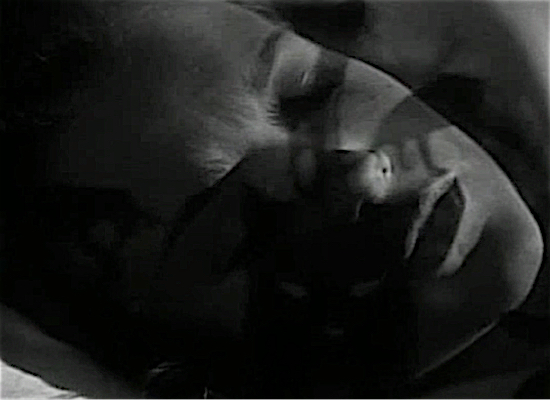
This gorgeous film produced by Val Lewton is about the beautiful Serbian immigrant Irena (Simone Simon), who knows that she will transform into a panther if she indulges her passion (read: has sex). Of course, nobody believes her superstitions, and even when evidence arises, we question her sanity. Cat People is all about what happens in the shadows. The film makes a clear connection between women and animals—a common thread in art—and also the idea that women’s passions have to be monitored and contained. Coming from the Old World, Irena encourages an exploration of the tension between myth and science, intuition and fact and the supernatural and the real.
Additional Suggested Viewing: Cat Girl (1957)
3. The Cannibal
Frightmare (1973)
Director: Pete Walker
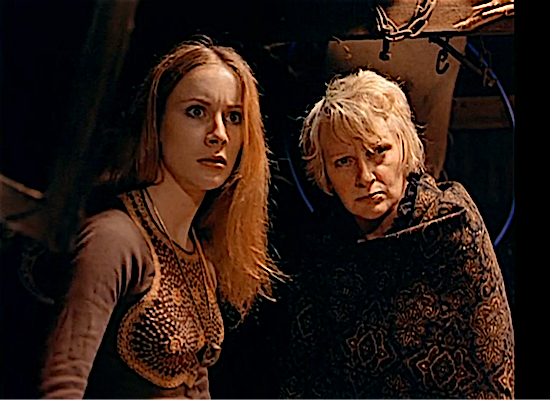
Dorothy (Sheila Keith) is unassuming middle-aged woman who has been released from a mental institution, where she pretends she is done with her habit of killing and eating people. Obviously, once released she takes up exactly where she left off. Apparently, this is some sort of genetic trait, because it turns out her daughter, Debbie (Kim Butcher), is also a secret cannibal. Walker tries to temper the topic with black humor and a few gory shots, but Frightmare is ultimately really bleak. It is a study of family, of dynamics, allegiances and the things that we will do for blood (relatives, and, in this case, actual blood). Cannibalism is a popular theme in horror, a stomach-turning taboo used to really shock audiences. Characters such as Dorothy and Debbie are frightening as their activities remain, for a time, invisible.
Additional Suggested Viewing: Trouble Every Day (2001), We Are What We Are (2010)
4. The Demon
Jennifer’s Body (2009)
Director: Karyn Kusama
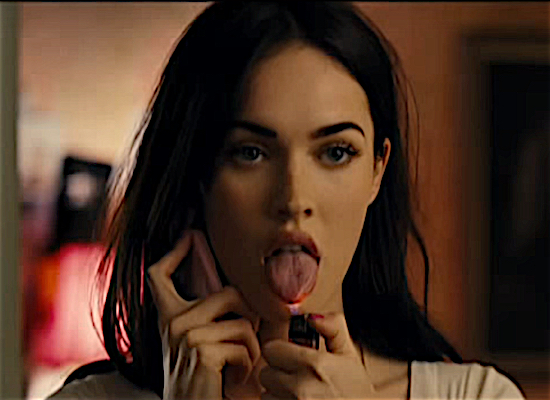
This film just does not get enough love. Jennifer (Megan Fox) is your stereotypical sexy cheerleader. When she morphs from high school evil to demonic evil, nobody except her best friend notices because her personality does not change a jot. The demon that took up residence in her recently sacrificed body seems right at home. She seduces and devours her prey with ease (and some sharp new teeth). Jennifer’s Body is a humorous exploration of stereotypes recurrent in horror films. The film relies heavily on the trope of the hot cheerleader, who is killed as would be expected in a slasher only to come back to life to wreak havoc. Characters like Jennifer have their (natural) attractiveness ramped up, so they can use their looks to lure their prey. Also, the possession of women is interesting as far as the fact that women are ready-made vessels anyway, right?
Additional Suggested Viewing: The Exorcist (1973), The Evil Dead (1981), Night of the Demons (1988)
5. The Ghost
Ringu (1998)
Director: Hideo Nakata
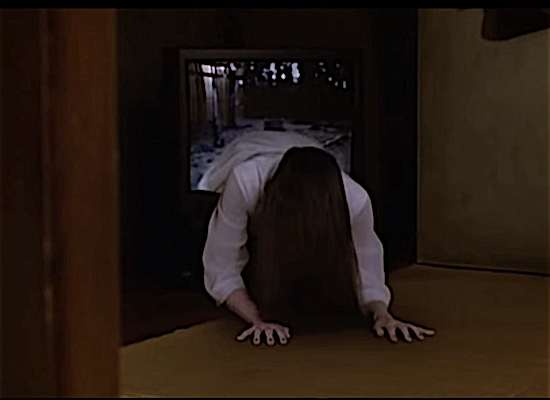
The image of Sadako crawling towards the screen and out of the television is one of the most memorable and terrifying scenes in a horror film. After her murder, Sadako’s powers remained so strong that she psionically created the video that would transport her vengeful spirit. Technology is central to this film, and the idea of the insidiousness of digital lives is still pertinent today, even if the media seems very out of date. (Try finding a working VCR player these days.) Sadako is frightening not just for her power to manipulate technology, but in her unbridled rage and indiscriminate vengeance. Terrifying ghost women driven by vengeance appear frequently in J-Horror, like Ju-On (2002), Shutter (2004) and Carved (2007). But there are notable scary ghosts in English language films (that are not remakes), like in The Innocents (1960) and The Others (2001), which are not malevolent.
Additional Suggested Viewing: The Shining (1980), Chanthaly (2013)
6. The Gorgon
The Gorgon (1964)
Director: Terence Fisher

This Hammer film transports its female monster from Greek mythology to a German village in 1910, where the gorgon Megaera (Prudence Hyman) has been literally petrifying unlucky locals with her stone-cold gaze. The mythology here is applied very loosely: Megaera was the name of a Fury, not a Gorgon, and she kills by possessing a living body during a full moon, which just makes no sense. The denouement is really not a big reveal as the vessel Carla (Barbara Shelley) is the main female character, and has no memory of the evenings of the murders. Unfortunately, Carla gets much more attention than our Gorgon, and the film has a strong romantic thread, which is much less fun than Megaera’s evil stare and the obviously plastic snakes bobbing from her head. The figure of Medusa is a familiar character in pop culture—the woman with snakes for hair is a memorable image. But this strange adaptation of Greek myth is unusual in the Hammer collection, a bold but failed attempt at inserting the Gorgon into the horror genre.
Additional Suggested Viewing: Clash of the Titans (1981, 2010)
7. The Insect
The Wasp Woman (1959)
Director: Roger Corman
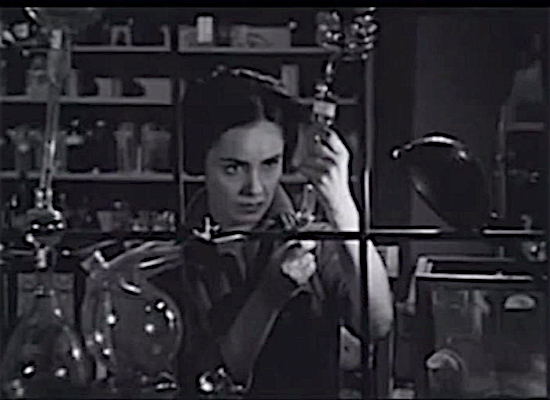
Despite her success as the founder of a cosmetics company, Janice (Susan Cabot) is unhappy with the natural aging process. She is so driven by her quest for youth that she designates herself the human test-subject for experiments with royal jelly, which live up to their promise to make her younger (science!), but have the unfortunate side-effect of turning her into a murderous insect-woman. As a Corman film, The Wasp Woman is predictably b-grade, and the monster costume is atrocious. But it is the narrative that is so interesting—Janice has power in her career, but craves the power of her former beauty. She reflects how society values youth and beauty, and echoes the extremes people go to achieve it. Also, the wasp itself indicates the temperament of women like Janice—unpredictable and armed with a poisonous sting.
Additional Suggested Viewing: Phenomena (1985)
8. The Snake
Night of the Cobra Woman (1972)
Director: Andrew Meyer

This is, unsurprisingly, a really trashy film. Nurse Lena is bitten by a cobra and becomes a snake-woman, maintaining her youth and beauty with a steady diet of venom and sex. The plot is basically a love triangle between Lena and younger couple Joanna and Duff. Set in the Philippines, Night of the Cobra Woman has very little plot and makes no sense but it is worth watching if you like really bad movies. This idea of woman-as-snake is of course aligned with the figure of the snake-haired gorgon.
Additional Suggested Viewing: Cult of the Cobra (1955)
9. The Telekinetic
Carrie (1976)
Director: Brian de Palma
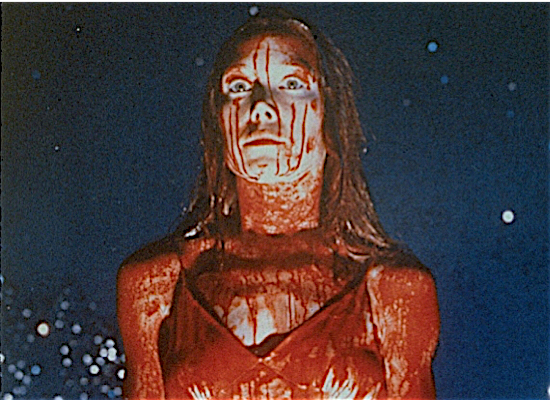
Carrie (Sissy Spacek) is a character that maintains an enduring appeal—she is so naïve and mistreated, bullied by her classmates and, more terribly, by her mother. De Palma really makes us feel for her, before he lets her kill most of the cast. Carrie is filled with hormones, rage and, unexpectedly, telekinetic power, which explode into a fiery mess following the infamous pigs blood-drenched prom scene. Blood is central to the plot, and the process of puberty is aligned with Carrie’s psychic development. As her body changes, her powers increase, reflecting the idea that when girls turn into women they become volatile and dangerous. Carrie cannot regulate her emotions—her irrational and violent behavior can be seen as fulfilling male fears of what happens when women are not properly controlled. Or, truer to theme, this is the risk you run when a young woman endures a lifetime of being dominated. Teenage rebellion is a common trope in film, but Carrie stands out as having plenty of repression—physical and social—to rebel against.
Additional Suggested Viewing: Firestarter (1984), X-Men franchise (2000-)
10. The Dangerous Vagina
Teeth (2007)
Director: Mitchell Lichtenstein

The Vagina Dentata is not a monster as such, but the presence of it transforms the protagonist Dawn (Jess Weixler) into a monster. Her hidden teeth seem like a horrific appendage, but when she commits to learning about her body (all the bits that are redacted in her school textbooks), she learns to control them. They are, in actuality, an evolutionary tool allowing not just her survival but overwhelming control. Teeth stands out in featuring an actual physical manifestation of what usually appears only as a general motif in film. (Think the Kraken in Pirates of the Caribbean: Dead Man’s Chest or the gaping jaw of sharp teeth in Jennifer’s Body.) Whether literal or figurative, this particular set of teeth conveys the perceived dangers of the female body, reflecting the recurring theme in horror films that women are not what they appear. In his film, Lichtenstein focuses on the way that knowledge about human biology and sexuality are restricted as a means of control. It is only when Dawn is forced to explore this herself that she gains power, learning to actively use her looks to look after herself (and as a means of revenge).
Additional Suggested Viewing: Blood Diner (1987)
11. The Vampire
Near Dark (1987)
Director: Kathryn Bigelow
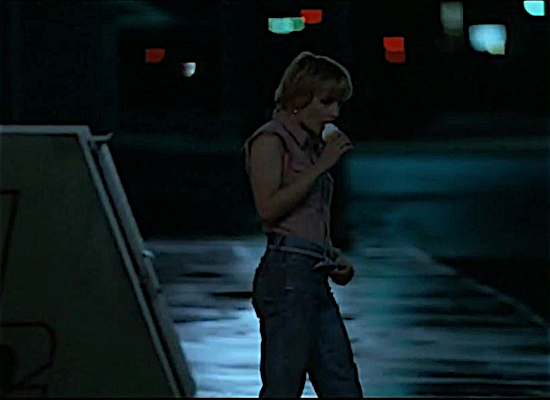
I don’t understand why Dracula gets all the love. Choosing just one female vampire was the hardest part of this list—in the last few years there have been some stand-out characters—think Eli in Let the Right One In (2008), Eve in Only Lovers Left Alive (2013) and the titular Girl in A Girl Walks Home Alone at Night (2014). What makes these women so compelling is that they do more than simply act as an alluring predator—they have motivations and feelings. Mae (Jenny Wright) in Near Dark sets an important precedent for this, as she is not just there to kill, or as a simple romantic lead for Caleb’s lead role. When the two meet while she is eating her ice cream, he is so cocky as he flirts, wholly unaware that she actually holds the power in their interaction. Yet, Mae seems to truly fall for Caleb and has to make some weighty choices as a result. She is not the stereotypical vampire, with a hypnotic glare, pale skin or sense of otherness—she seems strongly tied to her human origins. This makes her a character that we can identify with—and want to identify with. She allows us to think about what vampires mean, especially in regard to sexuality and the representation of desire.
Additional Suggested Viewing: Daughters of Darkness (1971), The Hunger (1983)
12. The Witch
Black Sunday (1960)
Director: Mario Bava
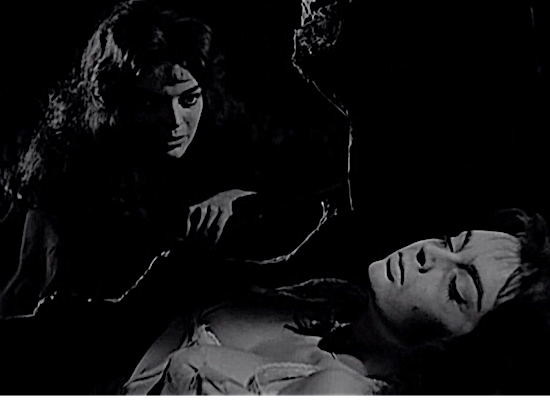
There were also too many witches to choose from, a figure who persistently fascinates. Bava’s giallo is central to the occult genre, with Barbara Steele’s fantastic witchiness appropriately dramatic and malevolent. Her beauty and power seem unaffected despite the two hundred years that have passed after she was burnt at the stake with a horrific mask fashioned with metal spikes affixed to her face. Don’t worry-all she needs is a little blood, and she’s back in business. She is also in luck because her physical double is wandering around nearby. Again, this film emphasizes the idea that women are not what they seem—and as horror tropes go, that of the witch embodies this most of all. Witches look like normal women but have a hidden power—in horror movies, this is obviously used for evil, selfish or even no reasons. Even worse, they gang up, amplifying their power within a coven! The idea of women banding together to work as a group? Now that’s an idea some men find truly terrifying.
Additional Suggested Viewing: The City of the Dead (1960), Suspiria (1977), The Craft (1996), The Blair Witch Project (1999), The Witch (2015)
13. The Wolf
Ginger Snaps (2000)
Director: John Fawcett
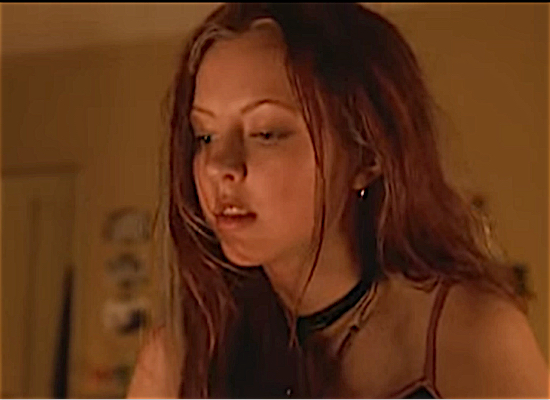
Ginger Snaps is an apt exploration of being a teenage girl, as it focuses on the mystifying physical changes and emotional turmoil of puberty. Unlike Carrie, Ginger lives a fairly average suburban life and can certainly take care of herself as far as teenage bullying. So, she does not exert power as a reaction to a terrible life, but rather because she wants to, she needs to and she can. Blood is a persistent image throughout the film. This shifts from the fake videos she has created with her sister, Brigette (Emily Perkins), as an expression of their obsession with death to real-life blood draining from actual bodies. This is closely tied to Ginger’s newfound sexuality—she dresses to seduce and so take what she wants, be it sex, blood or control. Werewolves tend to be male characters in films, so it is interesting to see how women are treated in this sub-genre. As a monster, the werewolf is all about the expression of the bestial nature that lurks in all of us. In Ginger Snaps, it’s also closely aligned with teenage angst and an overwhelming sexual desire. Ginger’s wolf-ness does not create but simply encourages her hunger for life (and blood).
Additional Suggested Viewing: The Howling (1981). When Animals Dream (2014)
Kate is not that kind of doctor. She is a part-time academic who writes on art and culture, and is currently working on a project about women in horror. You can find her at her blog and on Twitter.